
Welcome to the biweekly electronic newsletter from Stanford Bio-X for members of the Bio-X Corporate Forum. Please contact Dr. Hanwei Li, the Bio-X Corporate Forum Liaison if you would like to be added or removed from this distribution list, or if you have any questions about Stanford Bio-X or Stanford University.
Highlights
** On October 9, 2013, Bio-X celebrated the 10th Anniversary of the James H. Clark Center, the hub of Bio-X. Check out CLARK CENTER @ 10X as well as the Bio-X Timeline over the last 15 years!!
** Check out the article by Stanford President John Hennessy in the Nov/Dec 2013 issue of the Stanford Magazine on Bio-X and the Clark Center, "A Cauldron of Innovation".
Bio-X Core Programs
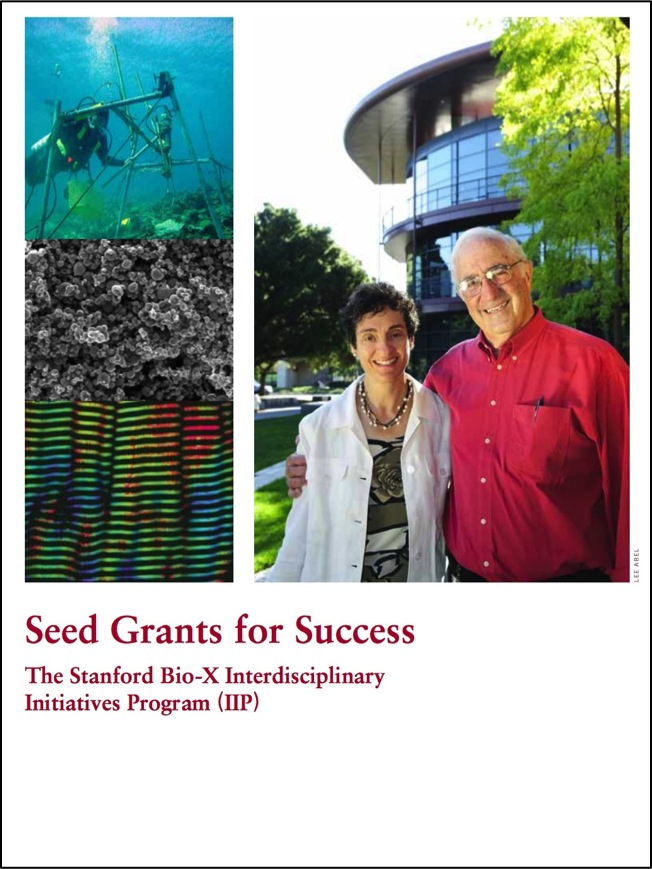 SEED GRANTS FOR SUCCESS - Stanford Bio-X Interdisciplinary Initiatives Program (IIP) SEED GRANTS FOR SUCCESS - Stanford Bio-X Interdisciplinary Initiatives Program (IIP)The Bio-X Interdisciplinary Initiatives Program represents a key Stanford Initiative to address challenges in human health. Currently, the IIP awards approximately $4 million every other year in the form of two-year grants averaging about $200,000 each. From its inception in 2000 through the beginning of the seventh round in 2014, the program has provided critical early-stage funding to 164 different interdisciplinary projects, involving collaborations from over 750 faculty members, and creating over 700 teams from six different Stanford schools. From just the first 6 rounds, the IIP awards have resulted in a 10-fold-plus return on investment, as well as hundreds of publications, dozens of patents filed, and most importantly, the acceleration of scientific discovery and innovation. In 2014, Bio-X started its 7th round of the Bio-X IIP Seed Grants Program, and 22 newly awarded projects were selected from 142 Letters of Intent (LOIs)! This has been the largest number of LOIs that Bio-X has received. Please go here to check out the newly awarded projects. Competition was intense, and the selection criteria included innovation, high-reward, and new interdisciplinary collaborations. (To view the 142 other IIP projects that have been funded from the previous 6 rounds, please click here.) |
 Bio-X FELLOWSHIPS Bio-X FELLOWSHIPSEvery year, graduate students and postdoctoral scholars of Bio-X affiliated faculty are highly encouraged to apply for the Bio-X Fellowships, which are awarded to research projects that are interdisciplinary and utilize the technologies of different fields to solve different biological questions. Students are encouraged to work collaboratively with professors of different departments, thus creating cross-disciplinary relationships among the different Stanford schools. Our fellows have conducted exciting research, resulting in publications in high-impact journals and have been offered excellent positions in industry and academia. To date, with the 19 new awardees of 2014, Stanford Bio-X has a total of 173 Fellows. The winners of the 2015 PhD Fellowship program will be announced later on this year on October 6, 2015 during our Fellows Symposium. The full agenda for the symposium is also listed below under "Events". IF YOU'D LIKE TO ATTEND, PLEASE EMAIL DR. HANWEI LI. You can view the numerous Fellowship projects that have been awarded over the years as well as oral presentations from previous symposiums here. |
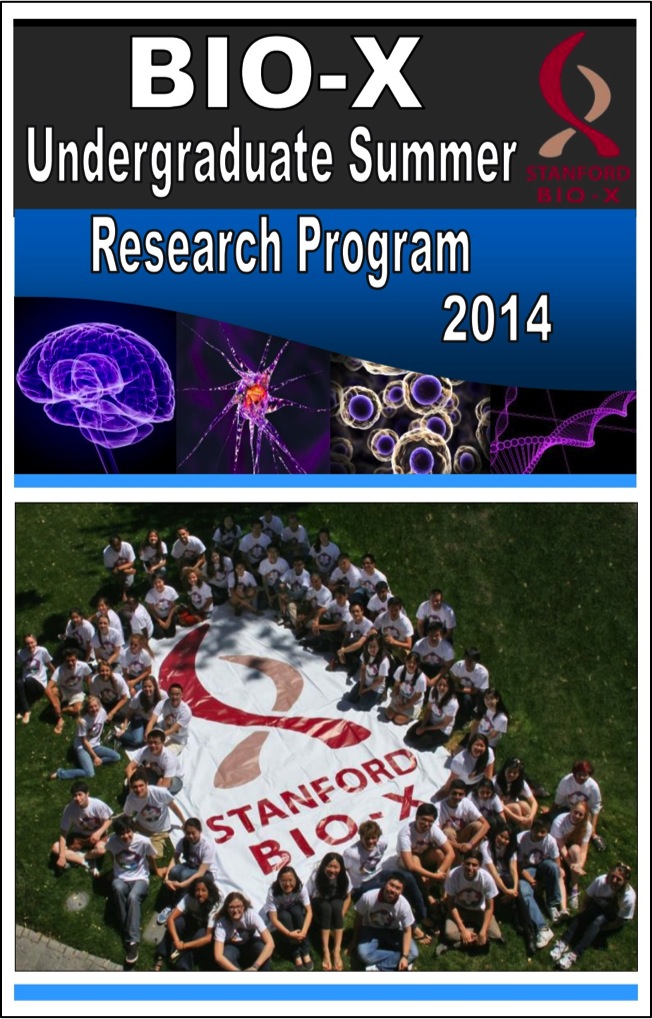 Bio-X UNDERGRADUATE SUMMER RESEARCH PROGRAM Bio-X UNDERGRADUATE SUMMER RESEARCH PROGRAMThe Bio-X Undergraduate Summer Research Program (USRP) supports undergraduate research training through an award designed to support interdisciplinary undergraduate summer research projects. The program is an invaluable opportunity for students to conduct hands-on research, learn how to carry out experiments in the laboratory, and develop the skills to read and analyze scientific literature. This program is eligible to Stanford students who want to work in the labs of Bio-X affiliated faculty. This year, nearly 160 students applied to the program, and 65 students were selected. Therefore, to date, 371 awards have been given to the Stanford undergraduate community to participate in the Bio-X Summer Research Program. The 2015 USRP officially ended during the last week of August, culminating in the USRP participants presenting their summer's research work during the poster session of last week's Bio-X IIP Seed Grant Symposium. In addition, during the 10 weeks of USRP, a total 30 different Faculty Talks took place on the 10 Wednesdays in Clark Center's S360 where the USRP students had the opportunity to learn about other faculty's research. To learn more about USRP and the Faculty Talks, please email Dr. Hanwei Li. |
COLLABORATIONS: We are cultivating and are highly successful in building meaningful collaborations with numerous corporate colleagues. New collaborations through our core programs are highly encouraged. To learn about how to get involved, please contact Dr. Hanwei Li, or Dr. Heideh Fattaey.
SYMPOSIUMS: Bio-X also holds symposiums every year that highlight our core programs. Thanks to all who came and attended the latest Bio-X IIP Seed Grants Program Symposium on August 26, 2015! It was extremely successful with 8 fantastic talks, and 170 posters presented during the reception (the largest poster session yet!). Nearly 400 people were in attendance of the event, with numerous discussions taking place throughout the event. Please go here to view the agenda and poster title list. Talks that were allowed to be videotaped will be uploaded as soon as possible.
All symposiums are listed on our website, including past IIP Seed Grants Program Symposiums, past Fellows Symposiums, and past Annual Symposiums.
If you'd like to learn more about the symposiums or any of the projects that were presented during the symposiums, please contact Dr. Hanwei Li with your questions.
News
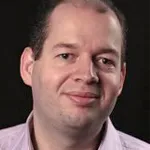 Stanford engineers find secret to steady drone cameras in swan necks
Stanford engineers find secret to steady drone cameras in swan necks
Bio-X Affiliated Faculty David Lentink
Project supported by Bio-X IIP Seed Grant Program
Swans and geese are the envy of aeronautical engineers. Even plump geese can perform remarkable aerial acrobatics – twisting their body and flapping their powerful wings while keeping their head completely still. Now, Stanford engineers have used high-speed video footage and computer models to reveal that whooper swans stabilize their head with a complex neck that's tuned like a car suspension. The study, published in Journal of the Royal Society Interface, has influenced the researchers' design of a camera suspension system that could allow drones to record steadier video. All birds have built-in vision stabilization to compensate for the up and down body motion caused by flapping their wings in flight. Scientists have studied the neck morphology and head motions of walking or stationary birds, but measuring the mechanism in flight has not been successful until now. David Lentink, an assistant professor of mechanical engineering at Stanford, and his colleagues devised a method for comparing high-speed video data of a whooper swan flying over a lake with a computer model that approximated the springy damping effects of the bird's neck that allow it to stabilize the vertical disturbances.
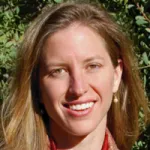 Stanford engineers produce cancer drug from rare plant in lab to benefit human health
Stanford engineers produce cancer drug from rare plant in lab to benefit human health
Bio-X Affiliated Faculty Elizabeth Sattely
Many of the drugs we take today to treat pain, fight cancer or thwart disease were originally identified in plants, some of which are endangered or hard to grow. In many cases, those plants are still the primary source of the drug. Now Elizabeth Sattely, an assistant professor of chemical engineering at Stanford, and her graduate student Warren Lau have isolated the machinery for making a widely used cancer-fighting drug from an endangered plant. They then put that machinery into a common, easily grown laboratory plant, which was able to produce the chemical. The technique could potentially be applied to other plants and drugs, creating a less expensive and more stable source for those drugs. "People have been grinding up plants to find new chemicals and testing their activity for a really long time," Sattely said. "What was striking to us is that with a lot of the plant natural products currently used as drugs, we have to grow the plant, then isolate the compound, and that's what goes into humans." In her work, published Sept. 10 in the journal Science, Sattely and her team used a novel technique to identify proteins that work together in a molecular assembly line to produce the cancer drug. Her group then showed that the proteins could produce the compound outside the plant – in this case, they had put the machinery in a different plant, but they hope to eventually produce the drug in yeast. Either the plant or yeast would provide a controlled laboratory environment for producing the drug. This work could lead to new ways of modifying the natural pathways to produce derivative drugs that are safer or more effective than the natural source. "A big promise of synthetic biology is to be able to engineer pathways that occur in nature, but if we don't know what the proteins are, then we can't even start on that endeavor," said Sattely, who is also a member of the interdisciplinary institutes Stanford Bio-X and Stanford ChEM-H.
 Drug prevents Type 1 diabetes in mice
Drug prevents Type 1 diabetes in mice
Bio-X Affiliated Faculty Paul Bollyky
The buildup of a substance in the pancreas during the pre-symptomatic stage of Type 1 diabetes is essential to the development of the disease, Stanford University School of Medicine researchers have shown. The investigators used a drug to block production of this substance in mouse models, staving off damage to insulin-producing cells and preventing the onset of the autoimmune disorder. The drug, which is currently used in Europe and Asia for treating gallstone-related spasms, has an excellent safety record, the researchers said. The findings, described in a study published online Sept. 14 in the Journal of Clinical Investigation, suggest that it may be possible to prevent the onset of Type 1 diabetes in humans if a similar treatment is initiated before the insulin-producing cells, or beta cells, are attacked by misguided immune cells. Type 1 diabetes, formerly called juvenile diabetes, afflicts one in 300 people in the United States. The study is the first to link the progression of Type 1 diabetes to changes in the architecture of the extracellular matrix, the carbohydrate- and protein-rich lattice in which the cells composing our tissues are embedded, said Paul Bollyky, MD, PhD, assistant professor of infectious diseases. Bollyky is the study’s senior author. The lead author is postdoctoral scholar Nadine Nagy, PhD.
 Stanford scientists see how the brain makes environmental decisions
Stanford scientists see how the brain makes environmental decisions
Bio-X Affiliated Faculty Brian Knutson
Natural resources are under increasing threat from both human development and climate change, and environmental economists have struggled to understand how the public assigns value to remaining pristine wilderness areas. In a recent study, environmental scientists and psychologists teamed up to explore how people make environmental decisions. To do so, the researchers used fMRI brain scanning. They found that the brain's emotional circuits can powerfully influence environmental decisions. This suggests that emotional appeals may motivate environmental protection more than data-intensive arguments. The findings could provide a new approach to promoting sustainable decisions. Nik Sawe, the lead author of the new study and a PhD candidate at Stanford School of Earth, Energy & Environmental Sciences, along with associate professor of psychology Brian Knutson, wanted to better understand how people value the environment, and what types of thoughts or feelings promote valuation of these natural resources.
 Girls and boys with autism differ in behavior, brain structure
Girls and boys with autism differ in behavior, brain structure
Bio-X Affiliated Faculty Vinod Menon
Girls with autism display less repetitive and restricted behavior than boys do, according to a study by researchers at the Stanford University School of Medicine. The study also found that brain differences between boys and girls with autism help explain this discrepancy. The study, published online Sept. 3 in Molecular Autism, gives the best evidence to date that boys and girls exhibit the developmental disorder differently. “We wanted to know which specific clinical manifestations of autism show significant gender differences, and whether patterns in the brain’s gray matter could explain behavioral differences,” said the study’s senior author, Vinod Menon, PhD, professor of psychiatry and behavioral sciences. Knowledge of the difference could help clinicians better recognize and treat autism in both sexes, he added. “Understanding this is really quite crucial clinically.” “We found strong evidence for gender differences in autism,” said postdoctoral scholar Kaustubh Supekar, PhD, the study’s lead author. The researchers used two large, public databases to examine nearly 800 children with high-functioning forms of autism in the United States, he said.
 Stanford, Toyota to collaborate on AI research effort
Stanford, Toyota to collaborate on AI research effort
Bio-X Affiliated Faculty Fei-Fei Li
Artificial intelligence is integrated into daily life, although often in imperceptible ways, such as language translators or algorithms that provide shopping tips based on past purchases. The next wave of AI-enabled devices that interact with humans will be far more obvious – think intelligent robotics and autonomous cars – and will become a driving force in reshaping society and individual lives. In a critical step toward that future, today Stanford announced the formation of the SAIL-Toyota Center for AI Research, a new research center funded by $25 million from Toyota to further the development of artificial intelligence technologies. The collaboration is part of a combined effort by Toyota, Stanford and MIT, where Toyota is also funding a parallel research center, to advance the state of autonomous systems, with a goal of reducing traffic casualties and assisting drivers in various ways. "The Stanford School of Engineering has a strong track record of leading innovation in artificial intelligence," said Persis Drell, dean of Stanford School of Engineering. "This support will enable us to expand our research in human-centered AI and innovate solutions to some of the world's most pressing challenges." The collaboration builds on decades of leading-edge AI research conducted at Stanford. In the 1960s, the Stanford Artificial Intelligence Lab, or SAIL, built some of the first chess-playing computers, and by the 1970s, the Stanford Artificial Intelligence Language was one of the predominant tools for programming AI platforms. More recently, Stanford researchers have built systems that have aced several autonomous driving competitions.
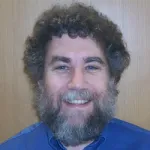
 Stanford scientists discover key mechanism in gene expression
Stanford scientists discover key mechanism in gene expression
Bio-X Affiliated Faculty Steven Block and Roger Kornberg
Every cell in your body carries the same genetic instructions, and yet cells don't accidentally turn into bone inside your heart, and teeth don't grow in your brain. This is thanks to systems of precise control over the expression of the genes required for each type of cell, for which an enzyme called RNA polymerase II is largely responsible. Now, a multidisciplinary team of Stanford scientists has observed this enzyme transcribing DNA in real time in the highest detail ever. The work is a crucial piece in understanding one of the most fundamental mechanisms in biology, and could some day lead to several medical advances. "If you ask about the fundamental molecules in all of life, the conversation starts with the molecules that carry out replication, transcription and translation of genetic code into protein," said Steven Block, a Stanford professor of applied physics and of biology. "There is no biology without them, and in higher organisms, RNA polymerase II is one of these molecules."
Events
| Cardiovascular Institute Sept 15, 2015, 11:30 am - 12:30 pm Li Ka Shing LK 130, Stanford, CA Frontiers in Cardiovascular Science: "Understanding the molecular and genetic basis of thoracic aortic aneurysm and dissection" Speaker: Dr. Michael S. Parmacek, UPenn |
Stanford Neurosciences Institute September 24, 2015, 12 pm - 1 pm Clark Center Auditorium, Stanford, CA Stanford Neurosciences Institute Seminar Series: "Presenilins and Alzheimer’s disease: new insight into the pathogenic mechanism" Speaker: Dr. Jie Shen, Harvard |
| Bio-X Sept 29, 2015, 12:15 pm - 1 pm Clark Center S361, Stanford, CA Frontiers in Interdisciplinary Biosciences Pre-Seminar for Dr. Eugene Shakhnovich on Oct 1, 2015 Speaker: Dr. Judith Frydman, Stanford |
Bio-X October 1, 2015, 12:15 pm - 1 pm Clark Center, S360, Stanford, CA Frontiers in Interdisciplinary Biosciences: "Merging Molecular Mechanism and Evolution: Theoretical Concepts and Experimental Explorations of Biophysical Fitness Landscapes" Speaker: Dr. Eugene Shakhnovich, Harvard |
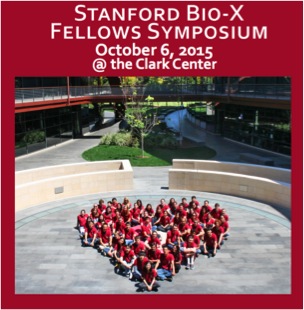 Bio-X Fellows Symposium Bio-X Fellows SymposiumPLEASE EMAIL DR. HANWEI LI IF YOU'D LIKE TO ATTEND THE SYMPOSIUM Tuesday, October 6, 2015 12 pm - 4 pm Clark Center Auditorium The Bio-X Fellowships are made possible by various gifts in order to promote interdisciplinary research by promising scientists who are working on projects that bridge the gap between biology and other fields. To date, over 150 Ph.D. students have received three-year fellowships through Bio-X. After completion of their training, our fellows continue to positively impact the scientific community through their roles as professors, co-founders of start-up companies, and research scientists, among others. 1:00pm Introduction CARLA SHATZ - David Starr Jordan Director of Stanford Bio-X 1:10pm Learning the Structure of Biomedical Relationships from Unstructured Text BETHANY PERCHA, Morgridge Family SIGF Fellow, Biomedical Informatics 1:30pm Wirelessly Powered, Fully Internal Optogenetics for Brain, Spinal, and Peripheral Circuits in Mice KATE MONTGOMERY, William and Lynda Steere Fellow and Bio-X Bowes Fellow, Bioengineering 1:50pm Abracadabra: Enabling Novices to Prototype Smart Medical Devices with Modular Electronic Building Blocks JOEL SADLER, Bio-X Bowes Fellow, Mechanical Engineering 2:10pm One-Minute Introductions of New Bio-X Bowes and Bio-X SIGF Fellows Poster Session in Clark Center Courtyard |
Resources
| Stanford University |
| Stanford Bio-X |
| Bio-X Seed Grants The Stanford Bio-X Interdisciplinary Initiatives Program (IIP) provides seed funding for high-risk, high-reward, collaborative projects across the university, and have been highly successful in fostering transformative research. |
| Office of Technology and Licensing "Techfinder" Search the OTL Technology Portal to find technologies available for licensing from Stanford. |
| Stanford Center for Professional Development - Take advantage of your FREE membership! - Take online graduate courses in engineering, leadership and management, bioscience, and more. - Register for free webinars and seminars, and gets discounts on courses. |
| Stanford Biodesign Video Tutorials on how FDA approves medical devices A series of video briefs recently produced by the Stanford Biodesign Program teaches innovators how to get a medical device approved for use in the United States. This free, online library of 60 videos provides detailed information on the Food and Drug Administration regulatory process, short case studies and advice on interacting with the FDA. |
To learn more about Stanford Bio-X or Stanford University, please contact Dr. Hanwei Li, the Bio-X Corporate Forum Liaison, at 650-725-1523 or lhanwei1@stanford.edu, or Dr. Heideh Fattaey, the Executive Director of Bio-X Operations and Programs, at 650-799-1608 or hfattaey@stanford.edu.

